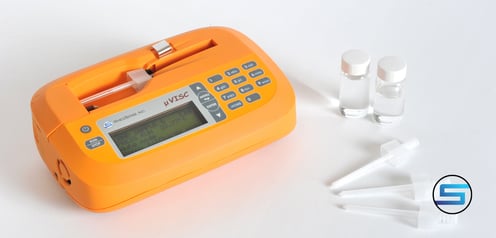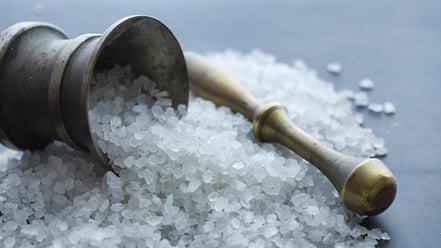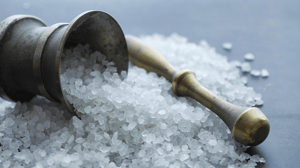Salinity is an important parameter when it comes to seawater or estuaries where freshwater from rivers mix with salty ocean water. Aquatic organisms have varied abilities to survive and thrive at different salinity levels which is due to the fact that salinity impacts dissolved oxygen levels in water. The difference in salinity levels can be detected via viscosity which is why viscosity is a key parameter when it comes to such applications.
Taking a sample of Sea Salt ASTM D1141-98 artificial sea water (ASW), in this post, we explain how to properly measure with microVISC™, our portable viscometer. The sample was provided by Lake Products, LLC*.

The challenges with measuring the viscosity of sea salt dissolved in water in general is due to the fact that water has high surface tension and the addition of the sea salt impacts the overall stability of the mixture based on how well it is dissolved into the solution. The salts appear to take much time to dissolve in water so you may notice in-homogeneity. With alternative methods of measuring viscosity, air interface could impact the surface tension of water, you won't have direct control over shear rates hence impacting the behavior of the sample during measurements (it is advised to run at higher shear rates when working with water).

Using VROC® technology powered viscometers, however, you will be able to reduce the impact of surface tension in your measurements and also work with high shear rates to help reduce the surface tension characteristic of the solution. With our small sample, portable QC viscometer, microVISC, you can use the following protocol:
To prep the sample, 41.95 grams of ASTM D1141-98, produced by Lake Products Company and pH adjusted to 8.2 were used to make ASW at the concentration and pH as instructed by Lake Products Company. With precise sample prep and vigorous testing, we observed the following:
- Even after stirring for over one hour and adjusting for pH there was a small amount of crystals that were undissolved at the bottom of the 1 L bottle.
- The sample was filtered with a 0.45 µm filter before testing.
- ASW viscosity is very sensitive to temperature.
- Noticeable viscosity decrease with incremental temperature increase was observed.
- It is important to make sure the sample is temperature homogenous. Therefore, it might be useful to stir the solution to prevent slight temperature variations within the sample.
- As temperature increases repeatability increases.
- %RSD for temperature range of 55 °C - 23.55 °C was 0.09918
- %RSD for temperature range of 95 °C - 22.95 °C was 0.588579
- This may reflect certain salt components are not completely dissolved and require additional heat.
- Residue can accumulate in the flow channel resulting in a spike in viscosity.
- Index #14 in the attached data show a viscosity spike.
- The spike was resolved by flushing with 1 pipette of 1% Aquet followed by 1 pipette of ASW with these settings,
- Advanced mode:
- Shear rate: 7527 1/s
- Measurement volume: 400 µL
- Priming volume: 30 µL
- Pause time: 30 seconds
- Advanced mode:
To summarize, the ASW we used is a solution composed of 10 salts dissolved in DI water at a pH of 8.2. Viscosity is a direct reflection of molecular interactions and with the components as varied and as many, an ASW solution will have many levels and degrees of interaction between the individual molecules leading to a complex rheological profile. If you would like to see the excel sheet in which we exported for this experiment, you can download it below!
Questions? Want to access more information on the data? Contact us!
Written by: Rick Paulino, RhoeSense Regional Sales Manager

